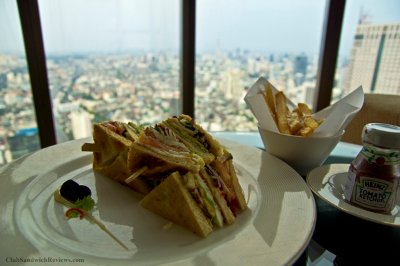Experiencing Culture through Club Sandwiches
Culture Club
Category: Press/MediaThis article originally appeared on the front page of the Travel section of LinkedIn, March 6 2014
I travel a lot; it’s one of my passions in life. I do it to experience, not just observe, different cultures. We all live on the same planet, yet many cultures in this world are complete opposites of each other. This often results in the dilemma that comparing cultures can be like comparing apples to oranges; it’s difficult to find something consistent from country to country to contrast.
One of the things that can distinguish a culture is the food (and flavors) they eat. Everywhere around-the-world people are eating similar foods prepared very differently. And everyone around-the-world has a different comfort food they default to.
When I lived in China, family and friends would visit me, and we would always go on “Evan’s Food Tour of Beijing.” I tried to give a similar tour when I lived in Northern England. But no matter who visited, at one point during their trip they’d always request comfort food: a Caesar salad, a cheese burger, a slice of pepperoni pizza… people crave comfort foods even though they love experiencing different cultures.
I am no different.
But finding comfort in food when traveling around-the-world can be a challenge. There are very few food items in this world that stay consistent from country to country. I know this not just from watching the Travel Network or Food Channel, but from personal experience, visiting and eating my way through different locations around-the-world.
And while I’m constantly in a new environment thriving off its surroundings, sometimes I just need something that allows comfort to wash over me in an awesome wave. As I traveled more in life, I found myself eating club sandwiches for comfort food nearly everywhere I went; from airports, to cafes, to restaurants, to hotels, to pools, and everywhere in-between. This comfort food of mine, low and behold, was available in every place I traveled to… albeit, quite different each time.
I began to start comparing and contrasting these club sandwiches and realized each was unique. It was incredible that such a sandwich could be called the same thing around-the-world yet change dramatically at each location. How was this possible? Who let this happen?
Out of this, my true passion was born: for the past three years, I have documented and reviewed every club sandwich I have eaten.
While one might think the club sandwich has a distinct set of ingredients, club sandwiches are not created equal; they are a clear reflection of the creator’s expectations and favorite ingredients. Yes: the expectation of what a club sandwich should be often dictates the way it is made.
Club Sandwiches embody the surrounding culture they are created in.
I’ve heard people declare “but there has to be a slice of bread in the center” or “a club sandwich doesn’t come with an egg” and while this might be accurate about the establishments these people visit, these standards are simply not universal.
While I don’t like to stereotype, trends do emerge. Five-Star Hotels often try to live up to certain “high-class” expectations, resulting in an emphasis on presentation. Airport restaurants and kiosks attempt to create convenience on-the-go, branding it usually for the state or country they are in. Hostels try to deliver value, country-clubs try to deliver tradition, and executive chefs with decades of experience often try to deliver creativity.
Californian cafes love adding avocado and subtracting the middle slice. Restaurants in the pacific islands tend to use sweeter ingredients. Mainland China goes heavier on mayonnaise usage and sticks to French fries for a side. Japan leans towards precision while the Philippines lean towards indulgence. New England loves adding something from the sea: lobster, crab, or even fish cakes.
So how do they all differ? And why should I care? Quartered? Halved? Not cut at all? Traditional versus untraditional? There is a perception of a “club sandwich” but no singular definition of one. And while all creations contain different contents, my research shows that the most important ingredient of them all is confidence.
Some exciting ingredients I’ve experienced over the years: chocolate chips, mango jelly, pear chutney, fish cakes, wyomato, challah, brie, saffron, smoked salmon, cranberry relish, mustard ponzu aioli, and the list goes on and on. It is good to note, outside of a type of bread, the tomato is the most commonly used ingredient for club sandwiches.
As a result of my quest and passion, I have been contacted by numerous organizations – mainly hotels – regarding their club sandwich. Every time I consult with a business about their club sandwich, the conversation always boils down to one question: how can they utilize local ingredients to make a unique club sandwich?
But there’s more than just the ingredients that make a club unique. Club sandwiches are about the experience, not just the bite. Equally important is the presentation, ingredients ratio, value, sides, and of course, the ambience.
Learning to love a comfort food and the way it evolves around the world has been an incredible journey that I look forward to continuing… even as I write this, on a business trip in San Francisco eating a club sandwich for room service in my hotel room.


